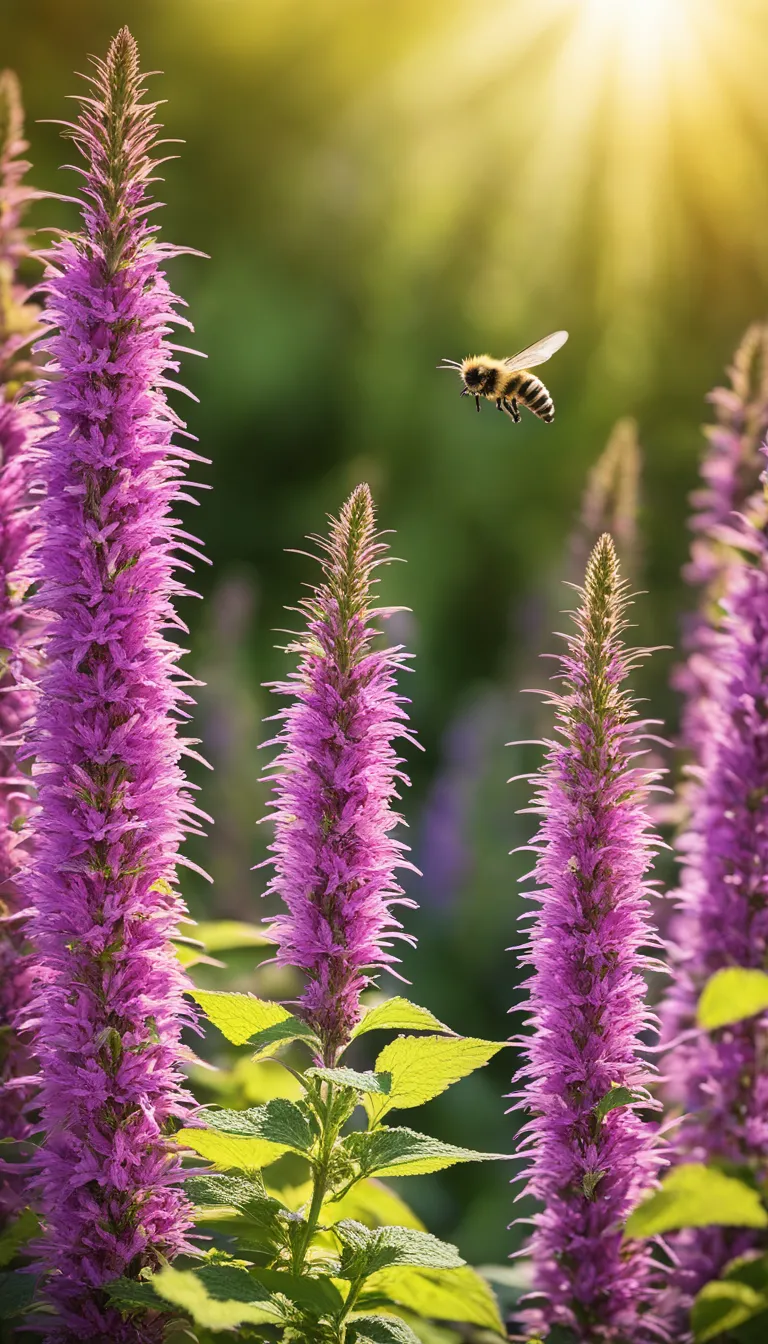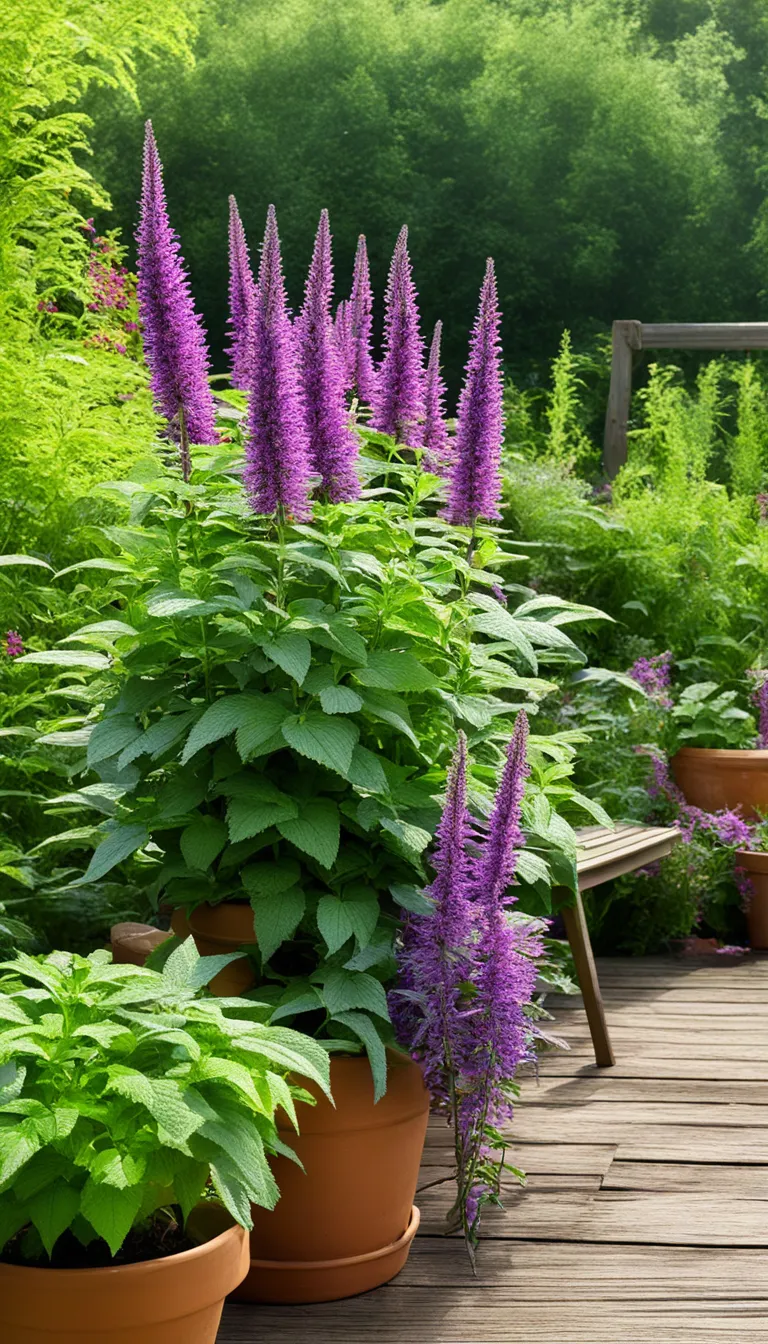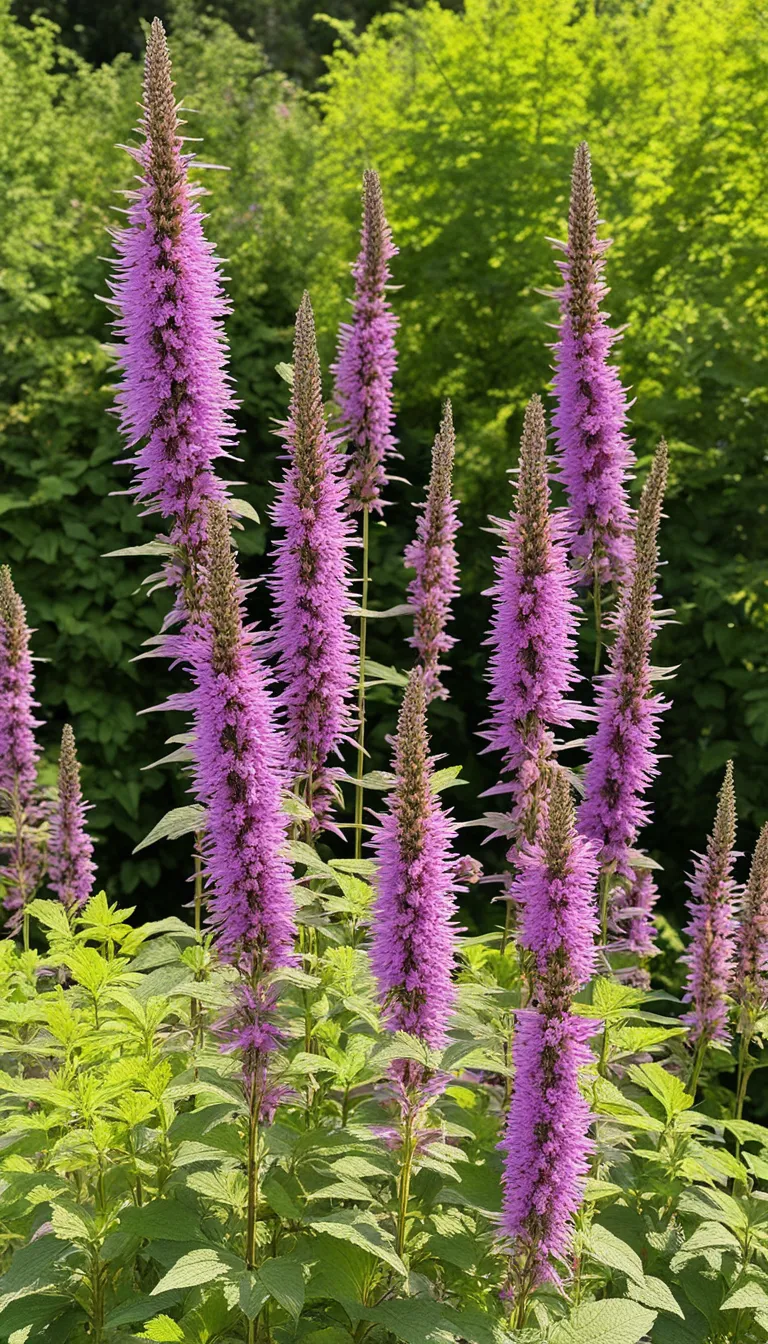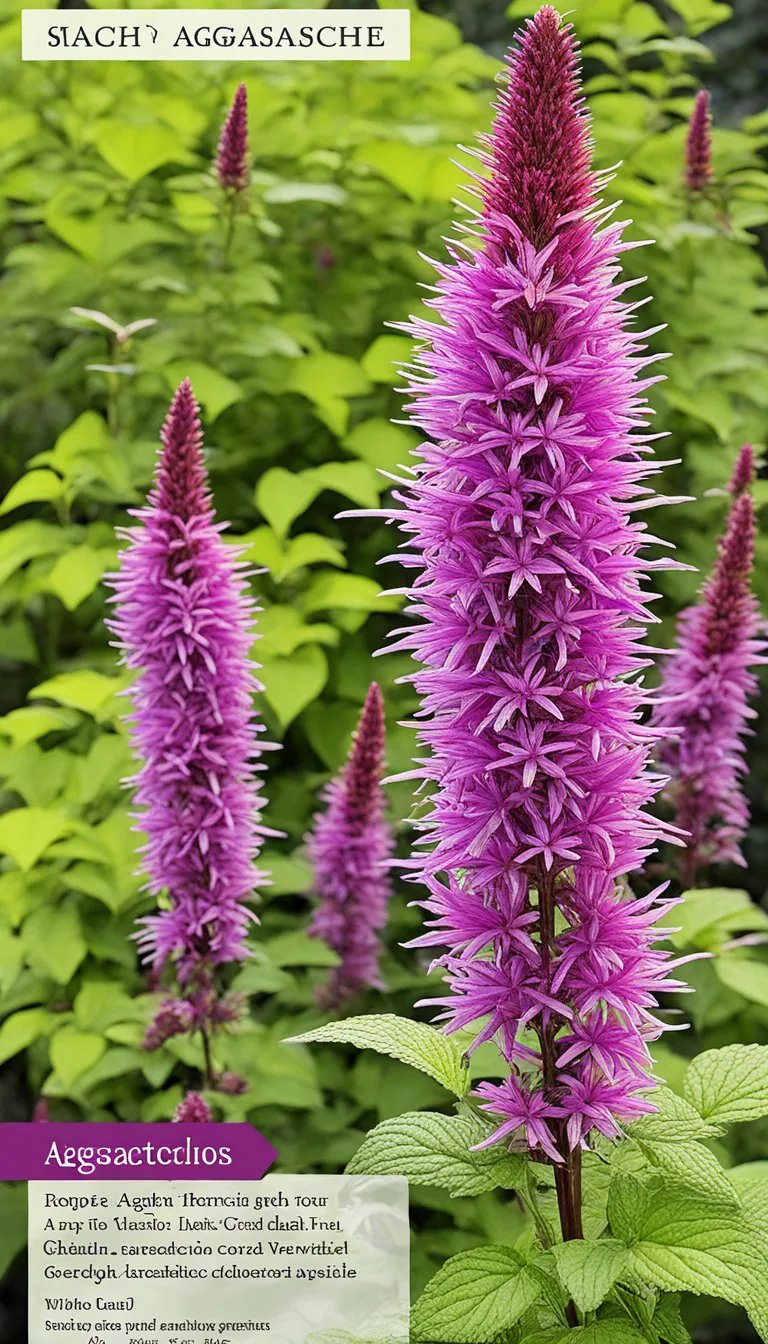Discover the vibrant and aromatic world of Agastache, a perennial favorite among gardeners for its colorful blooms and herbal benefits. Often referred to as “hyssop” or “hummingbird mint,” this plant is not just a feast for the eyes but also a magnet for pollinators such as bees, butterflies, and hummingbirds. The surprise element? Agastache is not only a visual explosion in the garden but also a powerhouse of fragrance and flavor that can be used in teas and culinary creations!
Imagine a garden where every turn is a sensory delight. That’s what Agastache brings to the table. With its tall, striking flower spikes that come in a rainbow of shades—purples, pinks, oranges, and more—it’s a plant that refuses to be ignored. But what’s truly exciting is how Agastache continues to surprise us with its versatility and resilience. Thriving in well-drained soils and basking in full sun, it asks for little yet gives so much.
Are you ready to be captivated? Let’s delve deeper into the care, varieties, and enchanting attributes of this remarkable genus. Whether you’re a seasoned gardener or a curious newbie, Agastache is bound to become a beloved addition to your green space.

What is Agastache?
Agastache, an enchanting name that rolls off the tongue, isn’t it? But what exactly is this plant that’s been stirring up quite the buzz in the gardening community? Often referred to as “Hummingbird Mint” or “Hyssop”, Agastache is a genus comprised of aromatic herbs that are a feast for the senses. Picture this: tall, elegant spikes teeming with vibrant flowers that range from the softest lavenders to the most electric blues, and even fiery oranges and reds. Can you imagine the explosion of color they bring to a garden?
Now, let’s talk fragrance because, with Agastache, it’s not just about the visual spectacle. Crushing the leaves between your fingers releases a surprise burst of minty, anise-like aroma, or sometimes even hints of lemon. It’s a sensory delight that also happens to be a magnet for pollinators. Bees, butterflies, and, as the nickname suggests, hummingbirds, can’t resist the allure of Agastache. So, by planting this beauty, you’re not only treating yourself but also giving back to nature by supporting our vital pollinators.
But wait, there’s more! Agastache isn’t just a pretty face. This hardy perennial is drought-resistant once established and makes for an excellent addition to water-wise gardens. It’s also known for its herbal properties, with some species used in teas and traditional medicine. Talk about a plant that punches above its weight!
- Drought-resistant: Ideal for water-wise gardens.
- Attracts pollinators: Bees, butterflies, and hummingbirds love it.
- Aromatic foliage: Offers a delightful fragrance when touched.
- Herbal benefits: Used in teas and traditional remedies.
In essence, Agastache is a plant that truly embodies the phrase “the gift that keeps on giving”. Whether you’re a seasoned gardener or a green-thumbed newbie, Agastache is sure to add a touch of magic to your outdoor space. So, are you ready to welcome this botanical superstar into your garden?

How to Care for Agastache?
Are you ready to nurture your Agastache into a burst of color and fragrance? Caring for these beauties is simpler than you might think! Let’s dive into the basics to ensure your Agastache thrives, creating a sensory explosion in your garden.
Sunlight is the first key to success. Agastache adores the sun, craving at least six hours of direct light a day. But, what about watering? These plants prefer a ‘less is more’ approach. Ensure the soil is well-draining and give them a drink when the top inch feels dry. Overwatering? That’s a big no-no—it can lead to root rot, and we don’t want that surprise!
Now, let’s talk soil. Agastache prospers in soil that’s rich but not too heavy. A mix of loam and sand with a dash of compost works wonders. Fertilizer? Only if you must. A light feeding in spring can be beneficial, but these plants are generally low-maintenance on the nutrient front.
- Full sun exposure (at least 6 hours of direct sunlight)
- Well-draining soil (loam and sand with compost)
- Minimal watering (when topsoil is dry to the touch)
- Occasional fertilizer (light feeding in spring)
- Pruning (deadheading and trimming to encourage bushiness)
Don’t forget about pruning. Deadheading the spent flowers keeps your Agastache looking tidy and can encourage more blooms. A little trim here and there also promotes a bushier growth, adding to the plant’s charm. With these care tips in mind, you’re all set to enjoy the dazzling display of your Agastache plants!

What are the Agastache Varieties?
Agastache, a plant that bursts with surprise and explodes with color, offers a wide array of varieties to enchant any gardener. Have you ever found yourself mesmerized by a garden that seems to buzz with life, its vibrant colors catching your eye and its scents wrapping around you like a warm summer breeze? That’s the magic of Agastache!
Let’s take a stroll through the explosion of varieties:
- Agastache ‘Blue Fortune’ – With its long-lasting, deep blue flowers, this variety is a pollinator’s paradise.
- Agastache ‘Black Adder’ – Boasting dark purple blooms, it’s a dramatic addition that brings a touch of mystery to your garden.
- Agastache ‘Golden Jubilee’ – Its golden-yellow foliage is a bright surprise, offering a stunning contrast to the lavender flowers.
- Agastache ‘Apache Sunset’ – Known for its fiery red and orange flowers, this variety is like a sunset captured in a plant.
Each variety not only brings its own unique aesthetic but also its own special surprise. The ‘Blue Fortune’ will leave you in awe with its ability to attract butterflies like a magnet. The ‘Black Adder’ will surprise you with its resilience and long blooming season. The ‘Golden Jubilee’ will explode with color even before its flowers bloom, thanks to its vivid foliage. And the ‘Apache Sunset’ will keep your garden glowing with warmth well into the cooler months.
Choosing the right Agastache for your garden can be like selecting the perfect piece of art for your home. It’s not just about the visual appeal; it’s about creating a space that feels alive, that surprises you every day with a new explosion of life and color.





